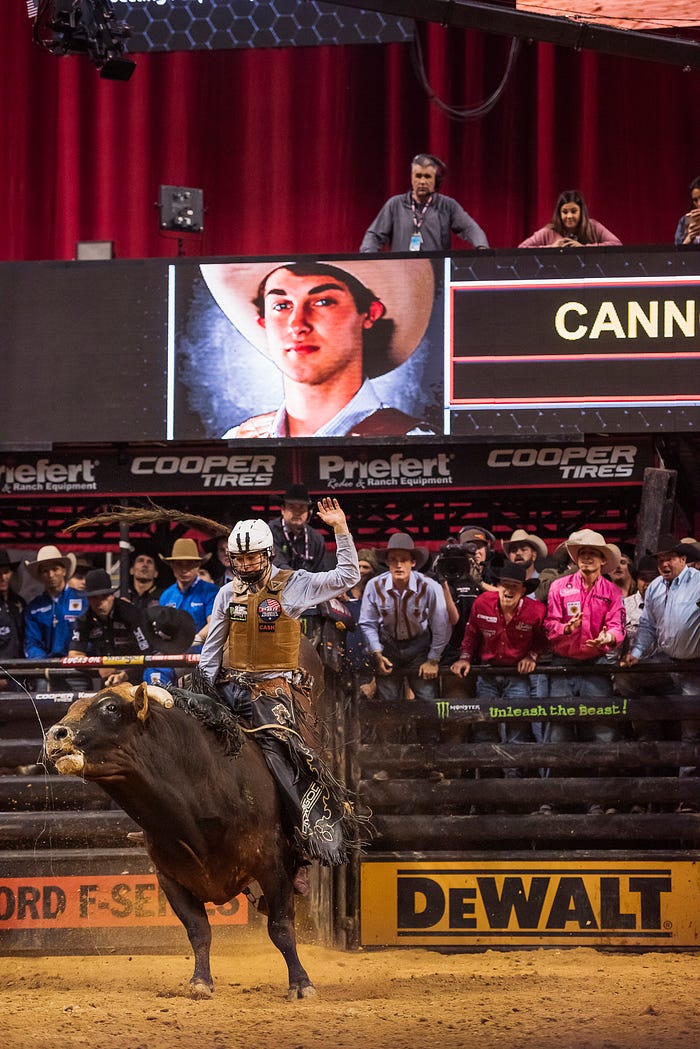Member-only story
Love/Hate
As Sports Become Safer, Bull Riding Doubles Down on Danger
Inside one of the most stubbornly dangerous sports in the world

 A cowboy is made in eight seconds. That’s how long you have to stay on a bull for it to count as a “ride.” Any less than that is a failure. On the best rides, eight seconds doesn’t feel like long enough; on the worst, it’s an eternity. But to get to that feeling, that adrenaline rush of power and success and terror, you first have to make it out of the gates, and Koal Livingston didn’t.
A cowboy is made in eight seconds. That’s how long you have to stay on a bull for it to count as a “ride.” Any less than that is a failure. On the best rides, eight seconds doesn’t feel like long enough; on the worst, it’s an eternity. But to get to that feeling, that adrenaline rush of power and success and terror, you first have to make it out of the gates, and Koal Livingston didn’t.
It was an overcast September evening in Fairfax, Virginia, the 22nd stop of the Professional Bull Rider’s (PBR) annual world tour. The world’s top bull riders were gathered in the chutes, taping their hands, spitting dip into Styrofoam cups, adjusting Stetsons. There was a million dollars on the line for the weekend, but Livingston, like all good riders, knew his competition wasn’t in Wranglers. The enemy is always the bull. After slapping his chap-covered legs, Livingston hopped over the railing of the chute where his rival, Outlaw, began to wriggle.
Livingston was almost ready to go — vest Velcroed, helmet on, mouthguard in, hand gripped around the rope — when Outlaw started bucking. From where I stood above the chute, I could see him go down and back. Then the…

